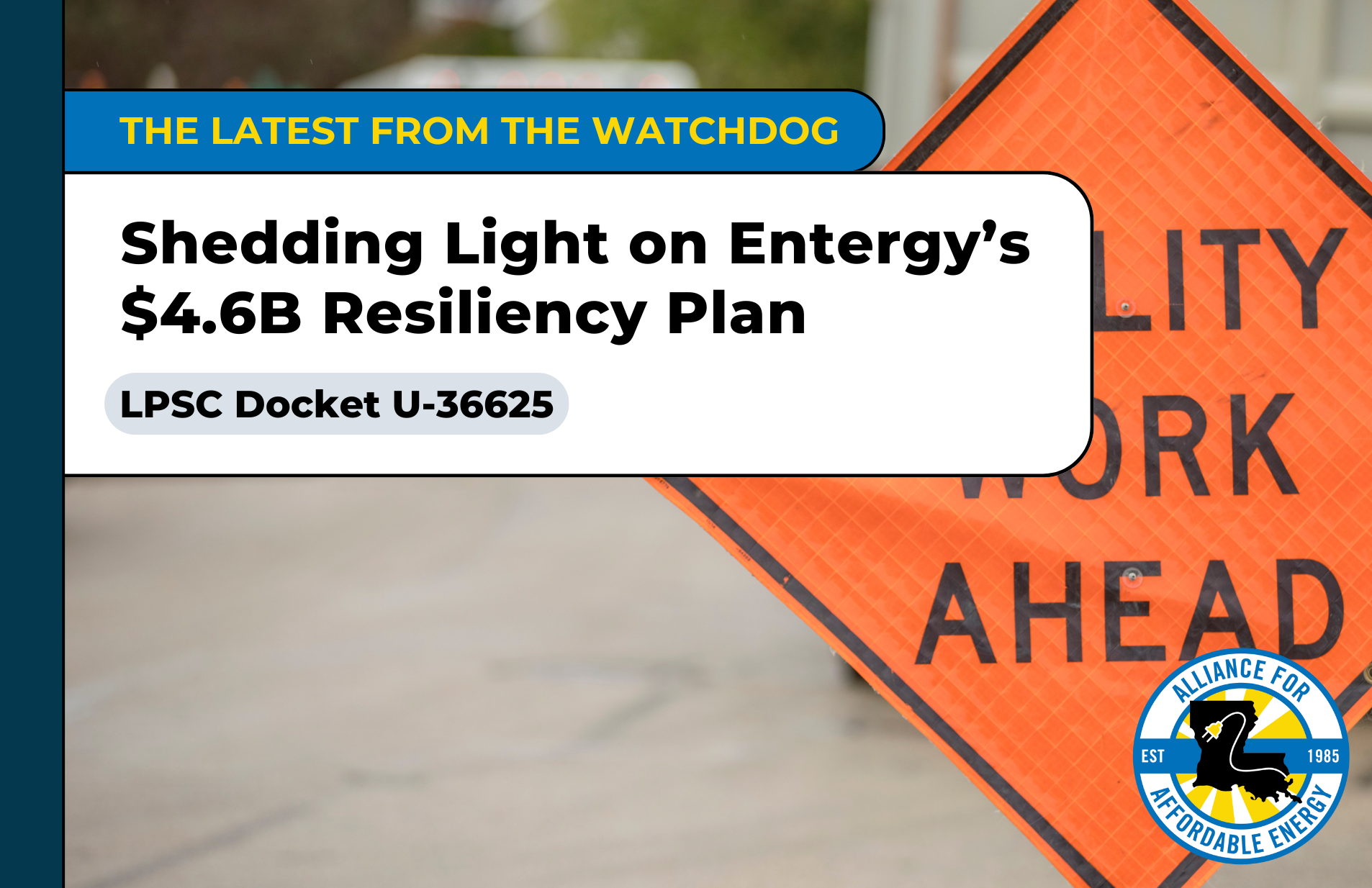This request is for Phase I of Entergy’s two part $10B total resilience investment plan.

Entergy’s plan uses a complex simulation model to predict damage following a hurricane but has never checked any of its predictions against a single actual hurricane to validate the complex analysis it relies on, raising questions about the accuracy of their analysis.
Furthermore, Entergy recommends $88M for dead-end transmission structures, which limit cascading outages and relieve stress on transmission conductors, $120M for telecommunications improvements and $158M for enhanced vegetation management without providing any supporting evidence on the benefits of these investments as compared to costs. It is hard to understand Entergy’s lack of diligence, especially for projects that should be easy to justify. More accountability and transparency is needed before the Commission approves Entergy’s plan to spend nearly $5 billion of our dollars.
Furthermore, Entergy filed their application to the Commission before the LPSC’s rulemaking docket on resilience planning has been completed. Some of the very kinds of requirements the Commission is considering in that docket might have alleviated the concerns we have in this one.
Nonetheless, Entergy’s poor track-record on hurricane recovery demands action. $1B of the plan is slated for no-brainer, non-contested improvements that The Alliance agrees should likely be made; however, Entergy must follow up with diligence and prove validation before the Commission approves additional projects. We believe Entergy should enhance its focus on maintenance. We also recommend Entergy proceed with investments to protect equipment and substations from flooding, particularly as flood water levels will increase over the next 50 years due to climate change. Here, we’re calling on Entergy to be forward-looking and use predicted floodwater levels instead of only looking at historical flooding as if climate change didn’t exist. On the flip side, we are pleased to see 75% of the benefits will serve Justice40 communities where some of LA’s most vulnerable households live.
Entergy focuses on the existing transmission & distribution system, but a truly holistic approach would consider enhancing connections to other regions, generation resilience, and microgrids. We recommend the Commission request Entergy consider these aspects and propose options that address these concerns, since they are critical for resilience. The Federal Energy Regulatory Commission (FERC) has recently highlighted how inter-regional interconnections are indispensable for storm resilience including within MISO. But no extensions of ties to SPP, TVA (two other RTOs) or other parts of MISO were discussed in Entergy’s plan and when we asked about them in discovery, Entergy refused to answer, saying they were “irrelevant.”
Entergy fails to address the resilience of their power generation and does not propose implementing any microgrids in Phase I, even though we know microgrids and solar + storage would have greatly benefited New Orleans post-Ida. We recommend Entergy study a microgrid tied to underground infrastructure, or to a large customer providing a critical public service such as a water utility and emergency shelters, so that we can protect our most vulnerable groups. Yet when we asked for evidence that public locations were considered, we were told that question was not relevant to the docket.
Entergy’s request for funding lacks transparency and fails to put proposed investments in context. Nowhere did Entergy describe its plans in the context of previous storm experiences – what critical resources had failed, why did they fail and what could have fixed it. Yet one of those questions may be answered in part by a map Entergy has published on its website, which we believe illustrates a key vulnerability.
Southeastern Louisiana is supplied nearly entirely by transmission lines from the West. A hurricane on a path between New Orleans and Baton Rouge will affect nearly all the transmission infrastructure supplying power to Southeastern Louisiana. The only other way energy can reach customers, indicated by map symbol (20), is the 230kV line from Michoud to Front Street – whose hardening is proposed in the Entergy New Orleans resilience plan. This upgrade is certainly an essential project – but is it enough? Entergy must consider alternatives that may be able to provide more resilience in the face of extreme weather and provide transparency to key stakeholders so that experts and regulators can fully anticipate the benefits vs. costs of this investment.

A holistic resilience plan must at the very least consider a broader set of options beyond what Entergy is proposing and should include transparent evidence for their proposed plan, especially since residents and businesses will be paying for it.